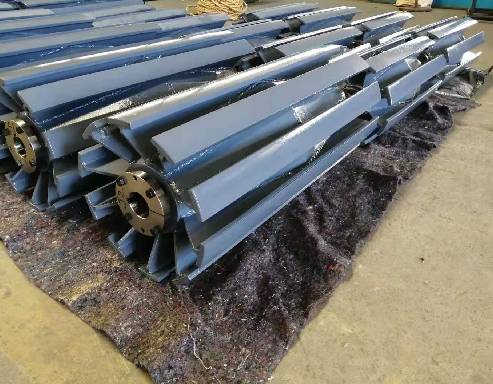 Afrikaans
Afrikaans  Albanian
Albanian  Amharic
Amharic  Arabic
Arabic  Armenian
Armenian  Azerbaijani
Azerbaijani  Basque
Basque  Belarusian
Belarusian  Bengali
Bengali  Bosnian
Bosnian  Bulgarian
Bulgarian  Catalan
Catalan  Cebuano
Cebuano  Corsican
Corsican  Croatian
Croatian  Czech
Czech  Danish
Danish  Dutch
Dutch  English
English  Esperanto
Esperanto  Estonian
Estonian  Finnish
Finnish  French
French  Frisian
Frisian  Galician
Galician  Georgian
Georgian  German
German  Greek
Greek  Gujarati
Gujarati  Haitian Creole
Haitian Creole  hausa
hausa  hawaiian
hawaiian  Hebrew
Hebrew  Hindi
Hindi  Miao
Miao  Hungarian
Hungarian  Icelandic
Icelandic  igbo
igbo  Indonesian
Indonesian  irish
irish  Italian
Italian  Japanese
Japanese  Javanese
Javanese  Kannada
Kannada  kazakh
kazakh  Khmer
Khmer  Rwandese
Rwandese  Korean
Korean  Kurdish
Kurdish  Kyrgyz
Kyrgyz  Lao
Lao  Latin
Latin  Latvian
Latvian  Lithuanian
Lithuanian  Luxembourgish
Luxembourgish  Macedonian
Macedonian  Malgashi
Malgashi  Malay
Malay  Malayalam
Malayalam  Maltese
Maltese  Maori
Maori  Marathi
Marathi  Mongolian
Mongolian  Myanmar
Myanmar  Nepali
Nepali  Norwegian
Norwegian  Norwegian
Norwegian  Occitan
Occitan  Pashto
Pashto  Persian
Persian  Polish
Polish  Portuguese
Portuguese  Punjabi
Punjabi  Romanian
Romanian  Russian
Russian  Samoan
Samoan  Scottish Gaelic
Scottish Gaelic  Serbian
Serbian  Sesotho
Sesotho  Shona
Shona  Sindhi
Sindhi  Sinhala
Sinhala  Slovak
Slovak  Slovenian
Slovenian  Somali
Somali  Spanish
Spanish  Sundanese
Sundanese  Swahili
Swahili  Swedish
Swedish  Tagalog
Tagalog  Tajik
Tajik  Tamil
Tamil  Tatar
Tatar  Telugu
Telugu  Thai
Thai  Turkish
Turkish  Turkmen
Turkmen  Ukrainian
Ukrainian  Urdu
Urdu  Uighur
Uighur  Uzbek
Uzbek  Vietnamese
Vietnamese  Welsh
Welsh  Bantu
Bantu  Yiddish
Yiddish  Yoruba
Yoruba  Zulu
Zulu snub roller
Understanding the Snub Roller An Essential Component in Conveyor Systems
In various industrial applications, conveyor systems play a fundamental role in the efficient movement of materials. Among the many components that make up these systems, the snub roller is a vital component that often goes unnoticed. This article aims to delve into the significance of the snub roller, its functions, types, and maintenance considerations, thereby shedding light on its indispensable role in the smooth operation of conveyor systems.
What is a Snub Roller?
A snub roller is a type of roller that is usually positioned at an angle to the rest of the conveyor's idler rollers. Its primary function is to redirect the path of the conveyor belt. Typically, the snub roller is located close to the drive pulley, enhancing the belt’s tension while increasing its contact with the pulley. The increased contact helps in transmitting power from the drive system to the belt, resulting in more efficient operation.
Functions of a Snub Roller
1. Tensioning the Belt One of the primary roles of the snub roller is to maintain the tension of the conveyor belt. Proper tension is crucial for the effective movement of materials along the conveyor. If the belt is too loose, it may slip, causing delays and operational inefficiencies. Conversely, a belt that is too tight can lead to excessive wear on the rollers and the belt itself.
2. Redirecting the Belt Path The snub roller facilitates the smooth transition of the conveyor belt around pulleys and turns. This is essential for preventing belt misalignment and ensuring that the material is transported accurately to its destination.
3. Increasing Friction By enhancing the contact area between the belt and the drive pulley, the snub roller increases the frictional force. This is vital for ensuring the belt does not slip under load, which could lead to damage and increased wear on the components.
4. Reducing Wear and Tear Properly positioned snub rollers reduce the chances of the belt becoming misaligned or snagged, which can lead to uneven wear and potential system failures. This proactive measure extends the lifespan of both the belt and the overall conveyor system.
Types of Snub Rollers
Snub rollers come in various designs, each tailored to specific applications. The two most common types are
snub roller

1. Standard Snub Roller This basic design consists of a simple cylindrical shape and is the most widely used in various conveyor systems. It provides adequate tensioning and redirects the belt efficiently.
2. Adjustable Snub Roller For applications requiring precise tension adjustments, adjustable snub rollers allow for manual or automatic tension modifications. This is particularly useful in systems where the material load may vary throughout operations.
Maintenance Considerations
While snub rollers are robust components, they do require regular maintenance to ensure optimal performance. Here are some maintenance tips
1. Regular Inspections Periodically check the condition of the snub roller for signs of wear and tear such as cracks, excessive corrosion, or abnormal noise during operation.
2. Lubrication Ensure that the bearings of the snub roller are adequately lubricated to prevent friction-related wear. Lack of lubrication can lead to overheating and premature failure.
3. Alignment Checks Verify that the snub rollers are correctly aligned with the conveyor belt. Misalignment can cause the belt to wear unevenly and lead to failures.
4. Tension Adjustment Always monitor and adjust the tension of the belt as required. Both under-tensioning and over-tensioning can negatively impact the belt’s lifespan and operational efficiency.
Conclusion
In summary, the snub roller is a critical yet often overlooked component within conveyor systems. By maintaining proper tension, redirecting the belt path, and increasing friction, it ensures that materials are transported efficiently and reliably. Understanding its functions, types, and maintenance requirements is essential for any organization that relies on conveyor technology. By emphasizing the importance of each component, including the snub roller, businesses can reduce downtime, improve efficiency, and ultimately enhance productivity.
-
Revolutionizing Conveyor Reliability with Advanced Rubber Lagging PulleysNewsJul.22,2025
-
Powering Precision and Durability with Expert Manufacturers of Conveyor ComponentsNewsJul.22,2025
-
Optimizing Conveyor Systems with Advanced Conveyor AccessoriesNewsJul.22,2025
-
Maximize Conveyor Efficiency with Quality Conveyor Idler PulleysNewsJul.22,2025
-
Future-Proof Your Conveyor System with High-Performance Polyurethane RollerNewsJul.22,2025
-
Driving Efficiency Forward with Quality Idlers and RollersNewsJul.22,2025





























